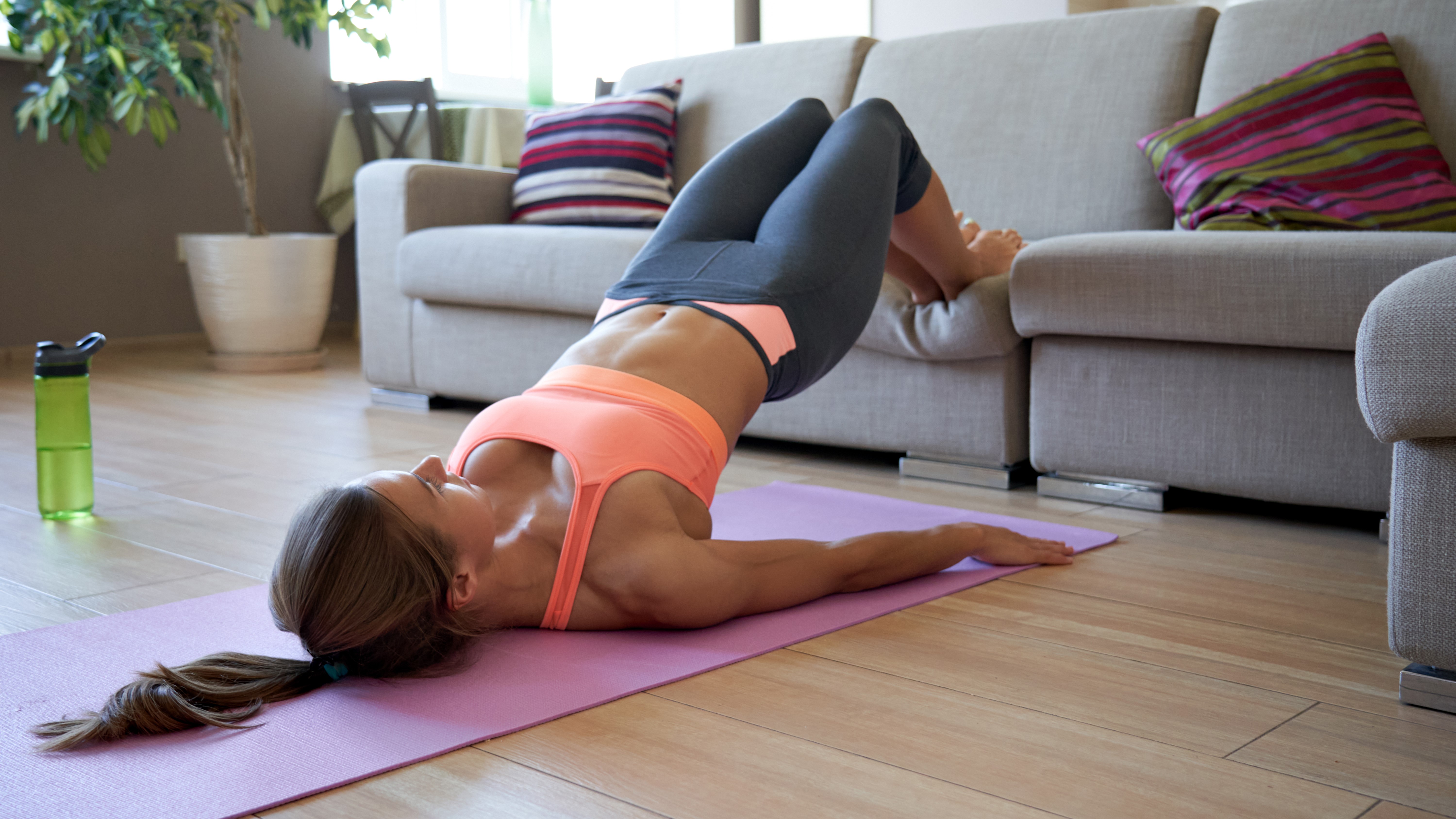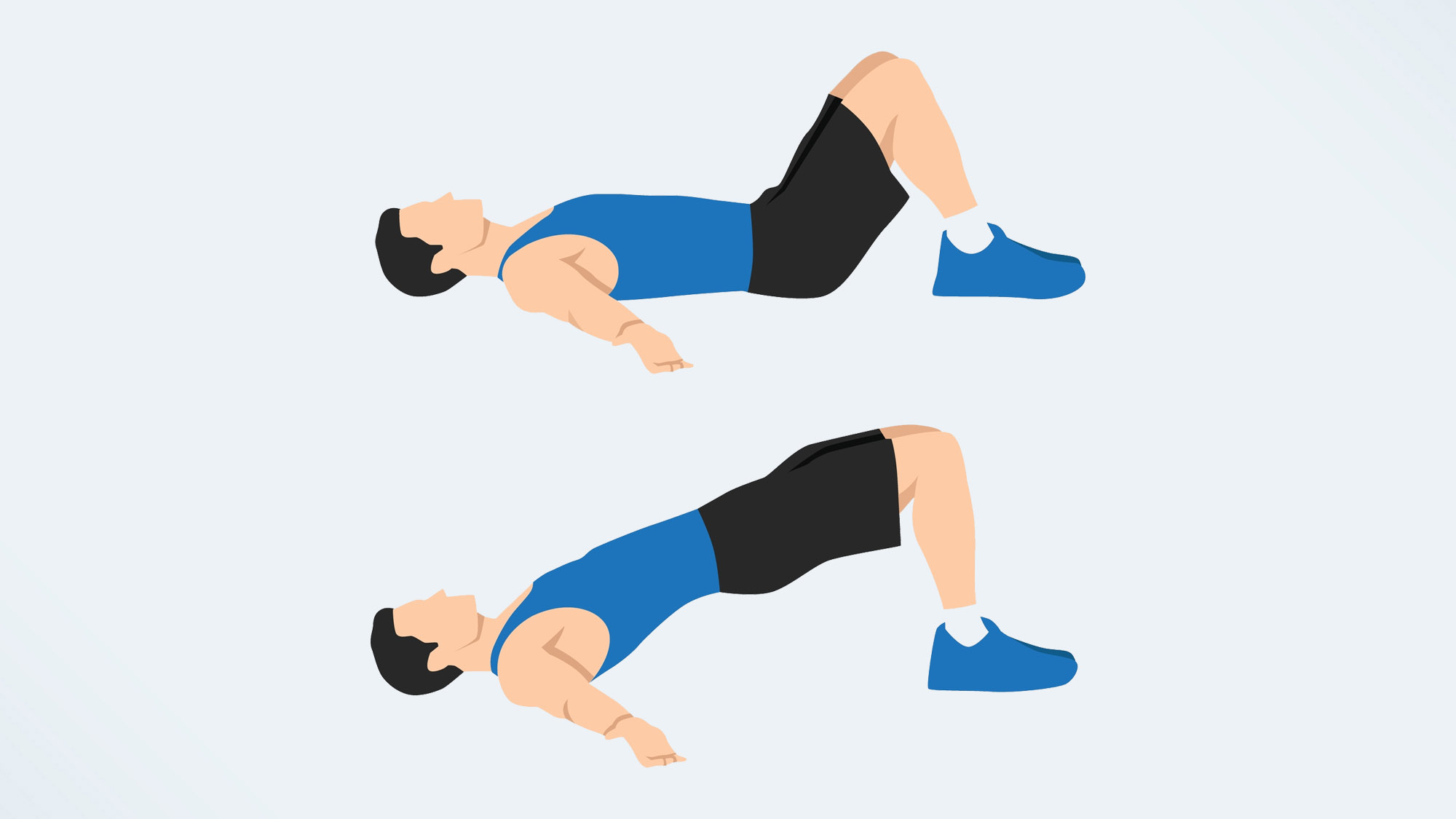How to do a glute bridge — form, benefits and modifications to try
Move over squats, there’s a new booty burner in town.

If one of your goals for 2022 is to strengthen and sculpt your glutes, we’ve got news — you’re probably not going to achieve it by spending hours doing a squat challenge. While squats are great for overall lower-body strength, but they primarily target your quads, so if you’re looking to really target the glutes, unrolling your exercise mat and adding some glute bridges to your routine might be a good idea. (Looking for a new exercise mat? We’ve hand-picked some of the best yoga mats on the market here).
Glute bridges target all three muscles in the glutes — the maximus, medius, and minimus. Like squats, they also work the backs of your legs, so your hamstrings will feel the burn too, as well as your core and abductor muscles. If you’re new to the exercise or returning to fitness, a glute bridge is a great way to teach yourself what that gym instructor means when they say ‘engage your glutes’, as you have to physically squeeze your butt muscles together to lift your hips up and off the mat. Glute bridges are also one of the best exercises to do if you sit down all day. In fact, I did 50 glute bridges a day for a week and here's what happened.
But how do you do a glute bridge to see results, and how should you progress the movement to single-leg glute bridges or glute bridges with weights or a resistance band? Here’s everything you need to know about adding this exercise to your home workout routine.
How to do a glute bridge

To do a glute bridge with correct form, you’ll need to start by lying on your back on an exercise mat, with your feet pressed into the floor about hip-width apart. Engage your core (think about sucking your belly button into your spine) and squeeze your glutes together as you raise your hips and pelvis to the sky. Squeeze your glutes at the top, before slowly lowering your hips back to their starting position. That’s one rep. To make bodyweight glute bridges harder, raise your arms up to the sky.
What are the benefits of a glute bridge?
Glute bridges target all three muscles in the glutes — the maximus, medius, and minimus. They also work into your hamstrings, core, and adductor muscles. Working on your glute bridges also challenges your stabilization muscles, and works on your posterior chain strength.
The best glute bridge variations
Looking to mix things up? Here's the best glute bridge variations to try:
Single-leg glute bridge
A single-leg glute bridge is the same as a standard bodyweight glute bridge, but this time you only have one leg on the floor, making the exercise much more difficult. To do a single leg glute bridge, plant your left foot into the floor and raise your right leg up at a 45-degree angle. As you lift up, squeeze your glutes and keep your hips level. Think about keeping a straight line from the outstretched foot, through the hip, to the head.
Sign up to get the BEST of Tom's Guide direct to your inbox.
Get instant access to breaking news, the hottest reviews, great deals and helpful tips.
Weighted glute bridge
When you add weights, the glute bridge seems very similar to a hip thrust, but there is one key difference. Your back is still pressed on the floor, as opposed to a hip thrust, where your back is usually on a bench. Use a dumbbell or a bar and hold the weight on the hip bones. Push up, engaging your glutes, pause at the top and lower back down to your starting position. Make sure the entire exercise is slow and controlled.
Resistance band glute bridge
Another way to increase the intensity of your glute bridge once you’ve mastered the bodyweight version is to add a looped resistance band. The resistance band adds extra resistance to the move, working your glute muscles harder. To do a resistance band glute bridge, add a looped resistance band above your knees, and push your thighs out against the band as you raise your hips off the mat. If you don’t have a looped band, you can also use a longer theraband and tie it around your legs, just make sure the resistance band isn’t actually over the knees.
Need to update your home workout kit? We've hand-picked the best resistance bands on the market here.
Stability ball glute bridge
The last glute bridge variation to add to your workout is a glute bridge on a medicine ball, stability ball, or a Pilates ball. To do this, elevate your feet by placing them on the ball, digging your heels into the ball to keep it from moving. Keep pressing down on the ball as you perform the glute bridge.
Alternatively, if you’re using a Pilates ball, you can also place it between your knees while performing a glute bridge. As you get to the top of the exercise, squeeze in on the ball to work your inner thigh muscles at the same time.
More from Tom's Guide

Jane McGuire is Tom's Guide's Fitness editor, which means she looks after everything fitness related - from running gear to yoga mats. An avid runner, Jane has tested and reviewed fitness products for the past five years, so knows what to look for when finding a good running watch or a pair of shorts with pockets big enough for your smartphone. When she's not pounding the pavements, you'll find Jane striding round the Surrey Hills, taking far too many photos of her puppy.
